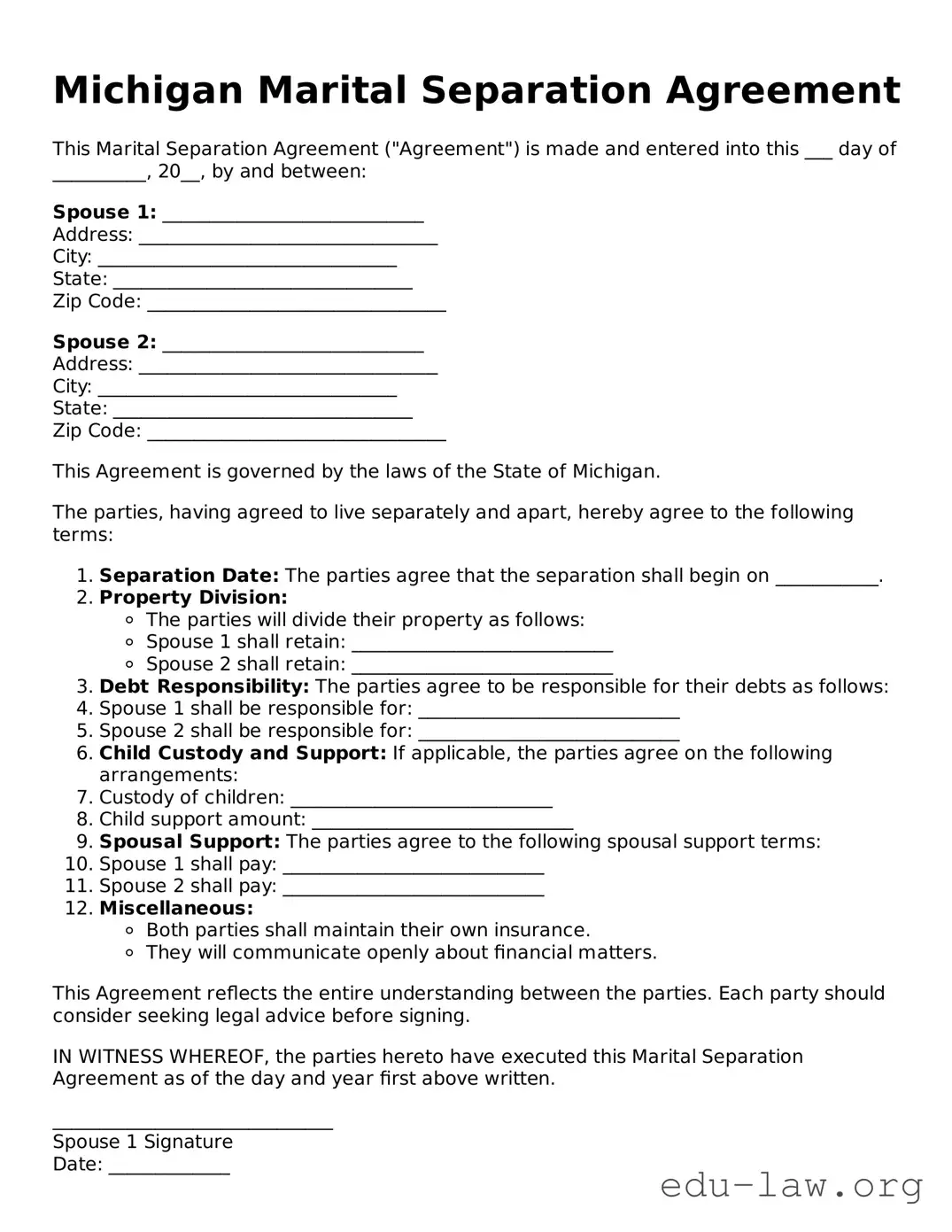What is a Michigan Marital Separation Agreement?
A Michigan Marital Separation Agreement is a legal document that outlines the terms of a couple's separation. This agreement can cover various aspects, including child custody, division of property, spousal support, and debts. While it is not a divorce, it clarifies each party's rights and responsibilities during the separation period. It is essential for both parties to understand their rights and obligations as they navigate this process.
How do I create a Marital Separation Agreement in Michigan?
Creating a Marital Separation Agreement involves several steps. First, both parties should discuss and agree on the terms they want to include. Next, it is advisable to draft the agreement, ensuring that it covers all necessary aspects, such as child support, visitation, property division, and any other relevant issues. It may be beneficial to consult with a legal professional to ensure the agreement meets legal standards and protects both parties' interests. Once completed, both parties should sign the document in the presence of a notary public for it to be legally binding.
Is a Marital Separation Agreement legally binding?
Yes, a properly executed Marital Separation Agreement is legally binding in Michigan. Once both parties have signed the agreement, it becomes enforceable. If either party fails to comply with the terms outlined in the agreement, the other party can seek enforcement through the court system. However, it is important to note that if the couple proceeds to divorce, the terms of the separation agreement may be subject to modification or extension by the court.
Can I modify my Marital Separation Agreement after it is signed?
Yes, modifications to a Marital Separation Agreement are possible. However, both parties must agree to the changes and formally record them in writing. Any modifications should also be signed and, ideally, notarized to ensure their enforceability. Significant life changes, such as changing employment or having a new child, may warrant a review and potential amendment of the agreement.
What should I include in a Marital Separation Agreement?
When drafting a Marital Separation Agreement, it is vital to include key components such as child custody arrangements, child support obligations, division of marital property and debts, spousal support terms, and procedures for resolving disputes. Both parties should be transparent and thorough in their disclosures to ensure the agreement is fair and comprehensive. Careful consideration of these elements promotes clarity and minimizes future conflicts.
